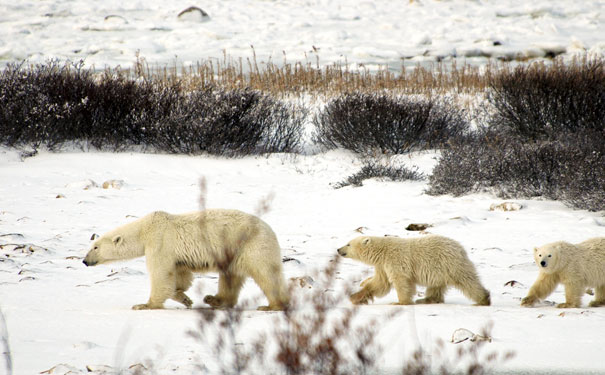
Fewer females are giving birth to cubs. Image: Shutterstock
Researchers have linked the loss of sea ice to the declining sizes of polar bear litters in Hudson Bay.
The polar bear population in Hudson Bay has dropped from 1200 to 900 in the past decade. As they are the most southerly population, they are the first to be affected by climate change.
Lead researcher Peter Molnar from the University of Alberta, Canada, stated in the press release “if temperatures across the Arctic continue to rise, much of the global population of polar bears will be at risk.”
Molnar and colleagues Andrew Derocher and Mark Lewis have analysed how long Hudson Bay is frozen during the polar bear’s hunting season and the amount of energy able to be stored by pregnant females. The females then survive on their fat stores for up to eight months in their maternity dens.
If the females are unable to store enough energy, they will either naturally abort or will not enter their maternity dens. In the early 1990S, 28 percent of pregnant polar bears in Hudson Bay didn’t give birth.
According to Derocher “An early spring-ice break up reduces the hunting season, making it difficult for pregnant females to even support themselves, let alone give birth to and raise cubs.”
The researchers have calculated if the spring ice break occurs one month earlier than it did in 1990, 40 to 73 percent of females will not have a cub. If it occurs two months earlier, these numbers are estimated to be between 55 and 100 percent.
Molnar says “Projected reductions in the number of newborn cubs are a significant threat to the western Hudson Bay polar-bear population. If climate change continues unabated the viability of the species across much of the Arctic will be in question.”






